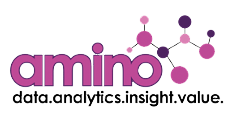
Data Integration?
What is it?
Data Integration refers to how data is connected between various sources, including data stores, applications, and organisations. There are two main types: Operational Data Integration and Analytical Data Integration.
Operational Data Integration involves initiatives, projects, or actions aimed at consolidating, migrating, upgrading, or synchronising operational databases to enhance efficiency. This process will often involve:
- API gateways
- Service Oriented Architectures
- Enterprise Service Bus (ESB)
Analytical Data Integration is the process of combining data from multiple sources to provide a unified view for analysis and insights. It includes using data integration tools to combine different types of data from multiple sources into a single dataset.

Why is it important?
Data Integration is key to ensuring that data is delivered to systems, processes, and consumers on time and in the right format. Many organisations will have large amounts of complex data. Without appropriate data integration, organisations will end up with expensive and inflexible architecture.
Operational Data Integration determines how easy it is for users to access information as and when needed, as well as how efficient the backend processes are. It is an important part of Master and Reference Data Management, enabling applications and processes to access data from master sources.
Analytical Data Integration affects how well a business can analyse data from multiple sources at scale. This can be through a monolithic data platform, such as a data lake or lakehouse, or instead by federated architecture, such as a data mesh. A data integration setup also determines the rate at which information is collected. For example, this may be through scheduled batches, instant processes when new events happen, or a continuous, real-time data stream.
How Amino can help deliver this
Most organisations’ integration architecture evolves, leading to cumbersome, unintegrated and complex systems. Organisations must balance taking a strategic and incremental approach to modernising their data integration whilst also responding to emerging needs.
Amino has extensive experience implementing new data integration architectures as part of wider projects, including data platform builds and master data solution implementations.
We also define and deliver integration strategies and roadmaps for organisations that are looking to modernise and simplify their legacy integration architecture.
